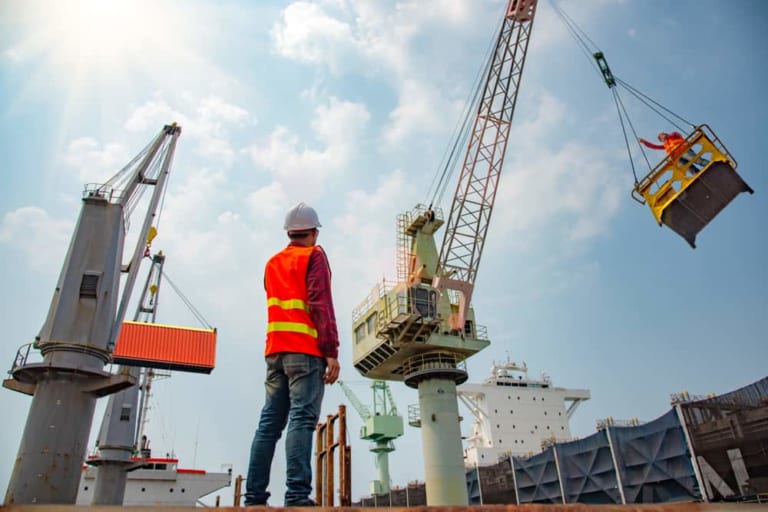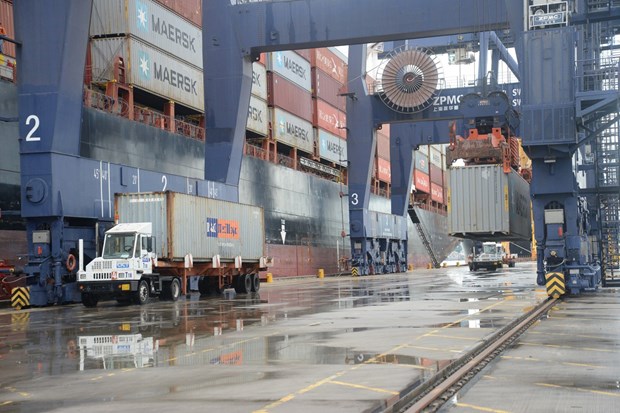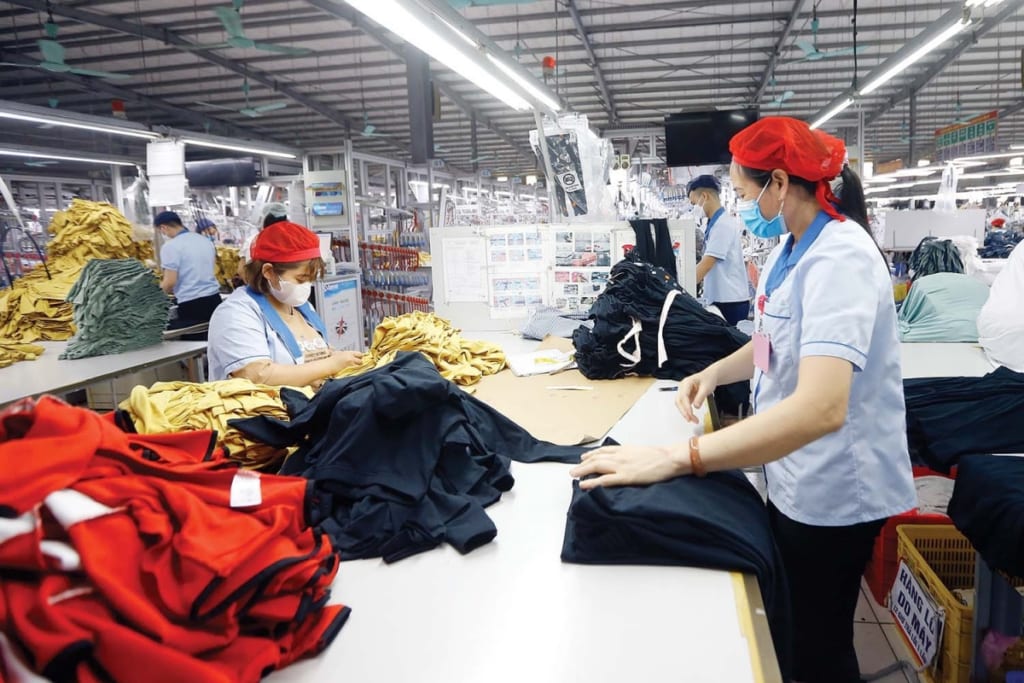As Vietnam rapidly urbanizes and industrializes, Vietnamese crane operators have become essential contributors to the country’s economic growth. These skilled professionals move beyond simply operating heavy machinery—they drive progress by ensuring the smooth and safe handling of materials in large-scale construction, logistics, and industrial projects.
This article explores the critical role of Vietnamese crane operators, the challenges they face, and the evolving nature of their work as technology reshapes the industry. We will also dive into how these operators help shape the future of Vietnam’s infrastructure and economy.
Crane Operators Powering Vietnam’s Growth
Vietnam’s rapid development has created an immense need for skilled crane operators. These professionals work in urban construction, industrial parks, and busy ports. Vietnamese crane operators are central to keeping projects on schedule and making sure materials are moved safely.
Urban Construction and Vietnamese Crane Operators
Urban construction is one of the primary drivers of Vietnam’s demand for crane operators. In major cities like Ho Chi Minh City and Hanoi, the skyline is constantly changing. Skyscrapers and large infrastructure projects rely heavily on cranes to lift and place materials efficiently. Vietnamese crane operators are under constant pressure to work with precision, especially in congested urban environments where space is tight.
Beyond operating cranes, they are responsible for navigating complex situations. Construction sites are often crowded with workers, machinery, and traffic. Operators must ensure materials are moved carefully to avoid accidents. Their skill and adaptability are essential for keeping construction projects on track.
Industrial Growth: Supporting Manufacturing with Vietnamese Crane Operators
While urban construction demands precision and speed, the industrial sector also heavily depends on the expertise of crane operators. Factories and industrial plants throughout Vietnam rely on cranes to move heavy equipment and raw materials. Vietnamese crane operators must handle diverse loads, ranging from delicate components to bulky machinery.
In these environments, the focus is often on horizontal movement, as materials are transported within expansive facilities. Operators must maintain safety and accuracy, particularly when handling high-value or hazardous materials. Their role ensures that production lines remain operational and delays are minimized.
Challenges Faced by Vietnamese Crane Operators
Operating a crane is far more complex than it appears. Crane operators in Vietnam face several challenges that require not only technical expertise but also quick decision-making and adaptability.
Dealing with Unpredictable Weather
Weather can have a significant impact on crane operations. Vietnam’s tropical climate often brings sudden rainstorms and high winds, which can make crane operation dangerous. Vietnamese crane operators working in urban areas, especially with tower cranes, must monitor weather conditions closely.
High winds, in particular, can cause loads to sway, creating a risk for the operator and anyone on the ground. Stopping operations during unsafe weather is necessary, but it can also delay projects. Therefore, operators need to balance safety with efficiency, knowing when to halt or adjust operations.
Ensuring Load Balance and Stability
Another challenge is managing the balance and stability of loads. Operators often handle heavy, irregularly shaped, or awkwardly sized materials. If the load isn’t properly balanced, it can shift mid-lift, potentially leading to accidents or damage. Vietnamese crane operators must make careful calculations to ensure each load is stable before lifting.
In some cases, operators must work on uneven or soft ground, which adds another layer of complexity. They must assess ground conditions and adjust how they stabilize the crane to prevent tipping. A well-executed lift is the result of both skill and meticulous preparation.
Navigating Tight Spaces in Urban Areas
Vietnam’s cities are growing rapidly, but available construction space is limited. Vietnamese crane operators often work in cramped areas, surrounded by existing buildings, roads, and people. Maneuvering a crane in these conditions requires extreme precision. A misstep could damage nearby structures or create hazards for workers below.
This challenge is particularly evident in dense urban construction zones, where multiple cranes may be operating simultaneously. Coordination and communication between crane operators and site managers are key to preventing accidents.
Skills and Training Required for Vietnamese Operators
Crane operators must have a unique combination of physical and mental skills. Vietnamese crane operators are highly trained to handle the complexities of their job. They undergo rigorous certification programs that ensure they meet the safety and operational standards required for such a demanding role.
Precision and Spatial Awareness for Safe Operations
Precision is a fundamental skill for crane operators. Whether moving materials in crowded construction zones or industrial facilities, they must be able to judge distances and angles accurately. Vietnamese crane operators need to anticipate how loads will behave when lifted and moved, taking into account factors like wind, load distribution, and ground stability.
Spatial awareness is critical when working in confined or high-risk areas. Operators must ensure their loads do not swing or shift unpredictably. Miscalculations can lead to costly errors or safety risks, which is why precision is such an essential part of their training.
Adaptability and Real-Time Problem Solving
Crane operators often work in environments that change rapidly. Vietnamese crane operators must be able to adapt quickly to shifts in weather, unexpected challenges, or changes in the construction or industrial environment. This requires excellent problem-solving skills and the ability to make decisions under pressure.
In urban settings, construction plans can change suddenly, requiring operators to adjust their approach. In industrial settings, crane operators may need to navigate complex production schedules and handle different materials in a short period. Adaptability is key to maintaining the pace of work.
Technology Transforming the Role of Vietnamese Crane Operators
As technology advances, the tools used by crane operators are evolving. Vietnamese crane operators benefit from new systems that make their jobs safer and more efficient, while reducing human error.
Load Monitoring Systems: Enhancing Safety
One of the most important technological advances in crane operation is the use of load monitoring systems. These systems provide real-time feedback on the weight and balance of loads, helping operators make more informed decisions. Vietnamese crane operators can use this data to ensure they are working within the crane’s capacity, reducing the risk of overloading or accidents.
These systems are especially valuable in industrial settings where precision is critical. Handling hazardous materials or fragile machinery requires exact control, and load monitoring technology helps operators manage these tasks with greater accuracy.
Remote-Controlled Cranes for Risk Reduction
Another development is the increasing use of remote-controlled cranes. In hazardous environments like chemical plants or high-risk industrial zones, remote control allows Vietnamese crane operators to manage cranes from a safe distance. This reduces the risk of exposure to dangerous conditions while allowing for more precise control over the crane.
Automation is also becoming more common in crane operations. Some tasks, such as stabilizing loads or repetitive movements, can now be automated. This reduces the physical strain on operators and allows them to focus on more complex tasks, increasing both efficiency and safety.
The Economic Impact of Vietnamese Crane Operators
The role of Vietnamese crane operators goes beyond technical skill. They are integral to the country’s economic growth, supporting various industries that drive Vietnam’s expansion on both a national and global scale.
Supporting Urban Infrastructure Development
Vietnam’s rapid urbanization requires extensive construction efforts, including housing, roads, and commercial infrastructure. Vietnamese crane operators are at the core of these projects, ensuring that materials are moved and positioned efficiently. Their ability to work under pressure and keep projects on track makes them vital to the country’s modernization.
In high-profile projects such as metro systems or smart city developments, crane operators’ contributions are crucial. Their expertise allows complex urban infrastructure to be completed on time, enabling Vietnam’s cities to grow and thrive.
Boosting Vietnam’s Role in Global Trade
As a growing player in international trade, Vietnam relies heavily on its ports to manage imports and exports. Vietnamese crane operators in these ports ensure that shipping containers are loaded and unloaded efficiently, helping to maintain the flow of goods. Their work directly impacts the speed and reliability of Vietnam’s logistics network.
By keeping port operations running smoothly, crane operators help position Vietnam as a competitive player in global trade. This efficiency in handling goods is critical for maintaining the country’s reputation in the international market.
Conclusion: The Future of Vietnamese Crane Operators
As Vietnam continues to expand its infrastructure and industrial capabilities, the demand for skilled crane operators will only grow. The evolving role of Vietnamese crane operators reflects the broader changes in the country’s economy—rapid urbanization, increased industrial output, and deeper integration into global trade.
While technological advancements will make crane operations safer and more efficient, the core skills of precision, adaptability, and problem-solving will remain essential. Vietnamese crane operators will continue to play a pivotal role in building the future of Vietnam, driving the nation toward economic success.




